Rachmaninoff’s Piano Concerto No․ 2, composed between 1900 and 1901, is a cornerstone of classical music, renowned for its emotional depth and technical brilliance․ This concerto, in C minor, Op․ 18, solidified Rachmaninoff’s reputation as a master composer and pianist, blending soaring melodies with complex harmonies․ Its enduring popularity stems from its expressive power and the challenges it presents for performers, making it a timeless favorite among musicians and audiences alike․
Overview of Rachmaninoff’s Piano Concerto No․ 2
Sergei Rachmaninoff’s Piano Concerto No․ 2 in C minor, Op․ 18, is a monumental work in the classical repertoire, composed between 1900 and 1901․ This concerto is celebrated for its emotional intensity, lyrical melodies, and technical demands․ It consists of three movements: Moderato, Adagio sostenuto, and Allegro scherzando․ The piece is notable for its rich orchestration and the interplay between the piano and orchestra․ Rachmaninoff poured his personal struggles and artistic depth into the concerto, which became a turning point in his career․ The work is both a technical challenge and a deeply expressive composition, making it a favorite among pianists and audiences․ Its enduring popularity is evident in its frequent performances and adaptations in popular culture․
Significance and Popularity of the Concerto
Rachmaninoff’s Piano Concerto No․ 2 holds a revered place in classical music due to its profound emotional resonance and technical brilliance․ Its popularity endures across generations, with the concerto being widely regarded as one of the greatest works in the piano repertoire․ The piece’s memorable melodies, such as the iconic theme from the second movement, have been adapted in films, popular songs, and even modern music, showcasing its universal appeal․ Composed during a period of personal turmoil, the concerto reflects Rachmaninoff’s emotional journey, making it deeply relatable․ Its technical challenges, including intricate passages and expansive chords, attract virtuosic pianists, while its orchestral richness captivates audiences․ The concerto’s ability to balance complexity with accessibility has cemented its status as a timeless masterpiece, ensuring its continued celebration and performance worldwide․
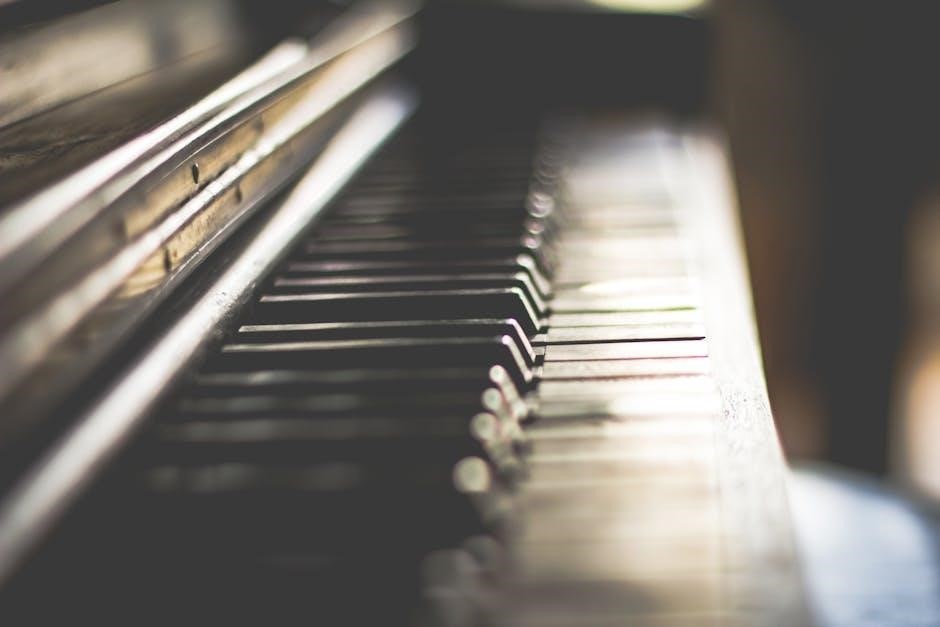
Historical Background
Composed between 1900 and 1901 following a psychological breakdown, Rachmaninoff’s Piano Concerto No․ 2 marked his triumphant return to composition․ Its premiere, with the composer as soloist and Alexander Siloti conducting, solidified his legacy․
Composition and Premiere Details
Rachmaninoff’s Piano Concerto No․ 2 was composed between June 1900 and April 1901, following a period of personal and creative struggle․ The concerto was premiered on April 27, 1902, in Moscow, with Rachmaninoff himself as the soloist and Alexander Siloti conducting the Moscow Philharmonic Orchestra․ Notably, the second and third movements were first performed earlier, on December 2, 1900, with Rachmaninoff at the piano․ The concerto is scored for piano and orchestra, including strings, double woodwinds, brass (2 trumpets, 4 horns, 3 trombones), and percussion (timpani and cymbals)․ The work was dedicated to Dr․ Nikolai Dahl, a physician who helped Rachmaninoff overcome a psychological breakdown․ The premiere marked a turning point in Rachmaninoff’s career, establishing him as a leading composer-pianist of his time․
Initial Reception and Impact
Rachmaninoff’s Piano Concerto No․ 2 received widespread acclaim upon its premiere in 1902, marking a major turning point in the composer’s career․ Critics and audiences were captivated by its emotional intensity, lyrical melodies, and technical brilliance, hailing it as a triumph․ The concerto quickly gained popularity, becoming one of Rachmaninoff’s most celebrated works․ Its success not only restored his confidence but also solidified his reputation as a leading composer-pianist of the early 20th century․ The concerto’s dramatic structure and expressive depth resonated deeply, making it a favorite among pianists and orchestras․ Its impact was immediate and lasting, ensuring its place in the classical music canon and inspiring countless performances and interpretations over the years․
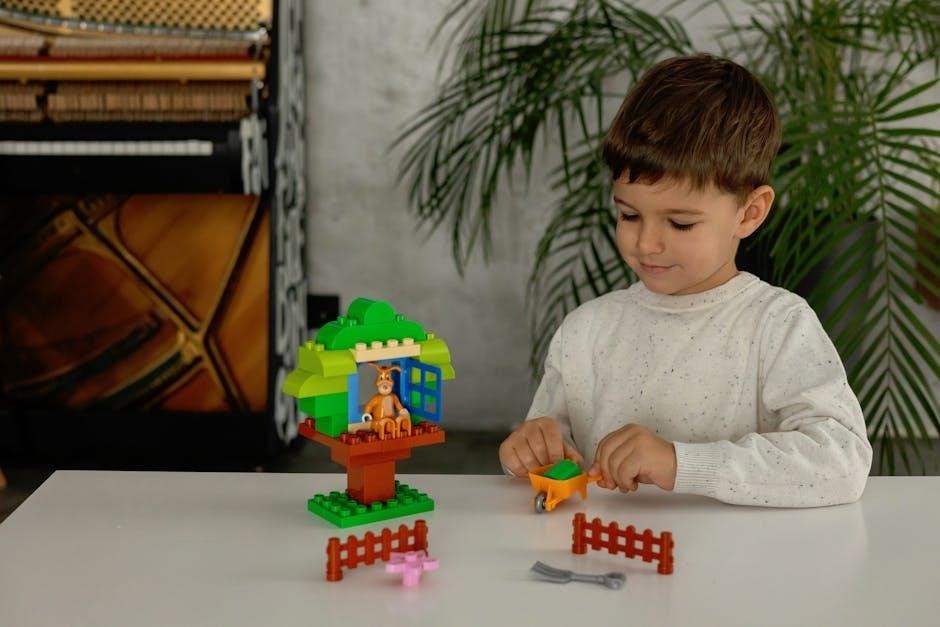
Structure of the Concerto
The concerto is divided into three movements: Moderato, Adagio Sostenuto, and Allegro Scherzando․ Each movement showcases Rachmaninoff’s mastery of form, emotional depth, and technical complexity, creating a cohesive musical narrative․
First Movement: Moderato
The first movement of Rachmaninoff’s Piano Concerto No․ 2, marked Moderato, is a powerful opening that sets the emotional and technical tone for the entire work․ Beginning in C minor, the movement opens with a dramatic orchestral introduction, featuring a descending motif that recurs throughout․ The piano enters with a simple yet haunting melody, which gradually builds into a complex interplay of themes․ The movement follows a loose sonata form, with exposition, development, and recapitulation, showcasing Rachmaninoff’s mastery of thematic development․ The piano part is both lyrical and technically demanding, requiring precision and expressiveness․ The orchestration is rich, with interweaving textures that highlight the dialogue between the soloist and the ensemble․ This movement is celebrated for its emotional depth, blending moments of tenderness with bursts of virtuosic brilliance, making it one of the most beloved opening movements in the piano concerto repertoire․
Second Movement: Adagio Sostenuto
The second movement, Adagio Sostenuto, is a poignant and lyrical centerpiece of Rachmaninoff’s Piano Concerto No․ 2․ Marked by a slow, sustained tempo, this movement showcases the composer’s ability to craft deeply emotional and memorable melodies․ The piano introduces a hauntingly beautiful theme, which is later expanded and embellished by the orchestra․ The interplay between the soloist and the ensemble creates a sense of dialogue, with the piano often taking on a vocal, almost operatic quality․ Harmonically rich and texturally lush, the movement builds to a climax before subsiding into a serene resolution․ Its emotional intensity and melodic beauty have made the Adagio Sostenuto one of the most recognizable and beloved movements in all of classical music, frequently featured in films and popular culture․ This movement remains a cornerstone of Romantic-era piano repertoire, celebrated for its expressive depth and technical demands․
Third Movement: Allegro Scherzando
The third movement, Allegro Scherzando, is a vibrant and dynamic conclusion to Rachmaninoff’s Piano Concerto No․ 2․ Marked by a lively tempo and playful character, this movement contrasts sharply with the introspective nature of the preceding Adagio Sostenuto․ The piano is showcased in a virtuosic display of technical brilliance, with intricate passagework and rhythmic precision․ The orchestra accompanies with energy and wit, creating a sense of dialogue and exchange between the soloist and the ensemble․ Structurally, the movement follows a sonata-like form, with thematic development and a dramatic climax․ Despite its technical demands, the Allegro Scherzando maintains a sense of humor and lightness, balancing the emotional intensity of the concerto․ Its virtuosic flair and infectious energy bring the work to a triumphant and satisfying close, leaving a lasting impression on listeners․
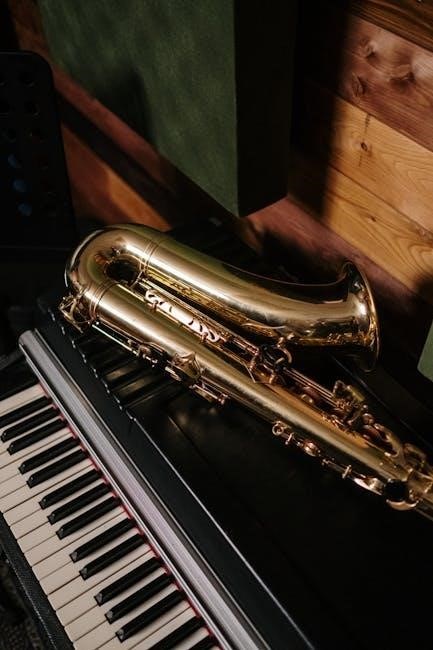
Musical Elements
Rachmaninoff’s Piano Concerto No․ 2 is characterized by its rich melodies, intricate harmonies, and dramatic orchestration․ The interplay between the piano and orchestra creates a dynamic and emotionally resonant musical experience․
Melodic Themes and Motifs
Rachmaninoff’s Piano Concerto No․ 2 is renowned for its sweeping, lyrical melodies and intricate thematic development․ The concerto opens with a dramatic orchestral introduction, leading to the piano’s entrance with a powerful, expansive theme․ This motif recurs throughout the first movement, evolving and transforming to create a sense of narrative progression․ The second movement, marked by its haunting beauty, introduces a lyrical melody that has become one of the most recognizable in classical music․ The third movement, with its virtuosic energy, revisits earlier motifs while introducing new ideas, culminating in a triumphant finale․ Rachmaninoff’s ability to craft memorable, emotionally resonant themes has made this concerto a favorite among audiences and a cornerstone of the piano repertoire․ The interplay of these melodic elements showcases Rachmaninoff’s mastery of thematic development and his deep understanding of musical storytelling․
Harmonic and Orchestral Elements
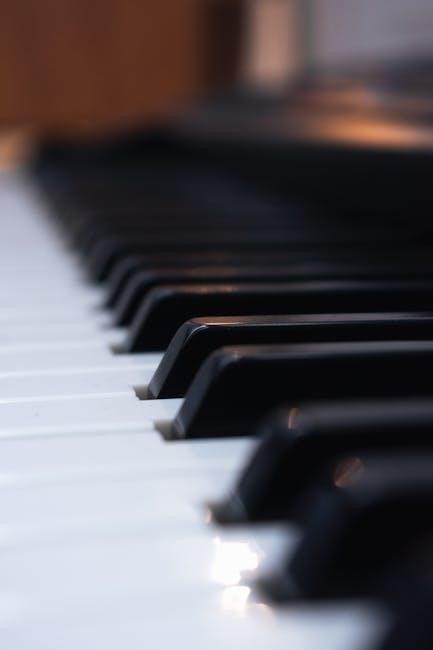
Rachmaninoff’s Piano Concerto No․ 2 is distinguished by its rich harmonic textures and masterful orchestration․ The concerto features a full orchestra, including strings, woodwinds, brass, and percussion, creating a lush, expansive sound․ Rachmaninoff’s use of chromaticism and extended chords adds depth and complexity to the harmonic structure, while his innovative modulation techniques enhance the dramatic tension․ The orchestra often serves as a dynamic counterpart to the piano, with the two engaging in a dialogue of contrasting timbres and textures․ Rachmaninoff’s orchestration is both expressive and practical, ensuring that the solo piano remains audible while the orchestra provides a vibrant, layered backdrop․ The interplay between the piano and orchestra is particularly evident in the concerto’s climactic moments, where harmonic and orchestral elements converge to create a thrilling musical experience․ This balance of color and structure underscores Rachmaninoff’s genius as both a composer and an orchestrator․
Technical Challenges for Pianists
Rachmaninoff’s Piano Concerto No․ 2 is renowned for its formidable technical demands, making it one of the most challenging works in the piano repertoire․ The concerto requires pianists to possess exceptional hand span, dexterity, and endurance․ The extensive use of complex chords, arpeggios, and rapid passagework pushes the limits of technical ability․ Additionally, the piece demands precise control over dynamics and articulation, as well as the ability to project delicate melodies above the orchestra․ Rachmaninoff’s own large hands influenced the composition, with many passages written to exploit the reach and strength of a pianist with similar physical attributes․ Pianists must also navigate intricate fingerings and manage the physical strain of performing such a demanding work․ Mastery of this concerto is considered a pinnacle of technical achievement, requiring years of dedicated practice and a deep understanding of Rachmaninoff’s unique style․

Cultural and Artistic Influence
Rachmaninoff’s Piano Concerto No․ 2 has profoundly influenced classical music, inspiring generations of composers and pianists․ Its memorable melodies have been adapted in films, popular songs, and various media, ensuring its lasting cultural impact․
Influence on Classical Music and Composers
Rachmaninoff’s Piano Concerto No․ 2 has left an indelible mark on classical music, inspiring countless composers and pianists with its technical brilliance and emotional depth․ Its intricate harmonies and melodic richness set a new standard for piano concertos, influencing later Russian composers like Shostakovich and Prokofiev․ The concerto’s innovative use of orchestration and its balance between soloist and orchestra have become a benchmark for classical composition․ Many pianists and composers have studied and performed this work, drawing inspiration from its challenging yet expressive passages․ Its legacy extends beyond classical circles, with its themes appearing in films, popular songs, and other media, ensuring its influence reaches a broad audience․ This concerto remains a cornerstone of classical repertoire, continuing to inspire new generations of musicians and composers alike․
Use in Popular Culture and Media
Rachmaninoff’s Piano Concerto No․ 2 has transcended classical music boundaries, becoming a staple in popular culture and media․ Its hauntingly beautiful melodies have been featured in numerous films, television shows, and advertisements, evoking emotional depth in various narratives․ The concerto’s second movement, in particular, has been widely used in cinematic soundtracks, adding dramatic tension and romantic flair to scenes․ Additionally, its themes have been adapted and sampled in popular music, with notable examples including Eric Carmen’s “All by Myself” and Celine Dion’s rendition of the same, which drew heavily from the concerto’s melodies․ This widespread use highlights the timeless appeal and universal emotional resonance of Rachmaninoff’s work, making it a favorite for creators across genres․ Its influence continues to grow, ensuring its place in both classical and contemporary media landscapes․
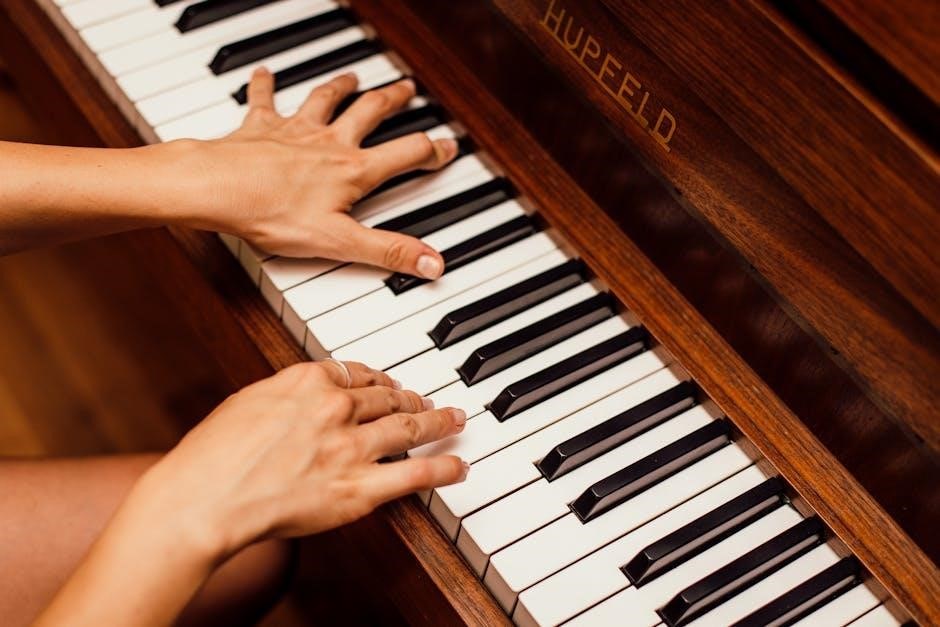
Notable Performances and Recordings
Rachmaninoff’s Piano Concerto No․ 2 has been performed by some of the most renowned pianists and orchestras worldwide, leaving an indelible mark on classical music history․ Sergei Rachmaninoff himself premiered the concerto in 1901, showcasing his extraordinary pianistic skills․ Over the years, legendary pianists like Van Cliburn, Arthur Rubinstein, and Vladimir Ashkenazy have delivered iconic performances, each bringing their unique interpretation to the piece; The concerto has been recorded countless times, with many versions considered benchmarks for technical brilliance and emotional depth․ Its enduring appeal has made it one of the most frequently recorded piano concertos in classical music․ These performances and recordings not only highlight the concerto’s technical demands but also its ability to evoke profound emotional responses, cementing its status as a timeless masterpiece in the classical repertoire․

Educational and Performance Resources
Sheet music and PDFs of Rachmaninoff’s Piano Concerto No․ 2 are widely available for study and performance․ Resources include detailed study guides, practice techniques, and expert recommendations for mastering the concerto․
Sheet Music and PDF Availability
Rachmaninoff’s Piano Concerto No․ 2 in C minor, Op․ 18, is widely available in sheet music and PDF formats for both educational and performance purposes․ Official publishers like Boosey & Hawkes and Dover Publications offer high-quality scores, ensuring accuracy and authenticity․ Additionally, digital platforms such as Musicnotes and the International Music Score Library Project (IMSLP) provide accessible PDF versions, catering to pianists and orchestras worldwide․ These resources often include the full score, piano solo parts, and orchestral reductions, making them versatile for rehearsal and study․ Many websites also offer free or affordable downloads, making the concerto accessible to students and professionals alike․ When sourcing sheet music, it’s important to verify the publisher’s credibility to ensure the arrangement’s fidelity to Rachmaninoff’s original composition․ PDF versions are particularly convenient for easy access and printing, supporting musicians in their practice and performance journeys․
Study Guides and Practice Techniques
Mastering Rachmaninoff’s Piano Concerto No․ 2 requires a combination of technical skill and musical interpretation․ Study guides often recommend breaking the concerto into smaller sections, focusing on challenging passages like the intricate fingerings and expansive chords in the first movement․ Practicing scales and arpeggios can improve dexterity, while slow, deliberate practice of complex runs ensures precision․ Emphasizing dynamic control and phrasing is crucial, as Rachmaninoff’s music demands both power and subtlety․ Many pianists advocate for metronome use to build tempo consistency, especially in the Allegro scherzando finale․ Additionally, studying recordings of renowned performers can provide insights into interpretation and expression․ Some resources suggest analyzing the concerto’s harmonic structure to deepen understanding․ Mental practice and visualization techniques can also aid in mastering the piece’s emotional and technical demands․ Overall, a structured, disciplined approach is essential for successfully performing this iconic concerto․
Recommendations for Learning and Mastery
Learning Rachmaninoff’s Piano Concerto No․ 2 demands dedication and a strategic approach․ Begin by thoroughly studying the score to understand its harmonic complexity and thematic development․ Break the concerto into manageable sections, focusing on technically challenging passages like the expansive chords and intricate fingerings․ Regular hand stretches and finger exercises can help build the necessary dexterity․ Practice with a metronome to ensure precise timing, especially in the Allegro scherzando movement․ Collaborate with a piano teacher or accompanist to refine interpretative nuances and dynamic control․ Record and review your performances to identify areas for improvement․ Additionally, explore historical recordings of renowned pianists to gain insights into phrasing and expression․ Start with slower tempos and gradually increase speed as mastery grows․ Finally, incorporate mental practice and visualization techniques to connect with the concerto’s emotional depth․ A patient, disciplined approach will yield lasting mastery of this iconic work․
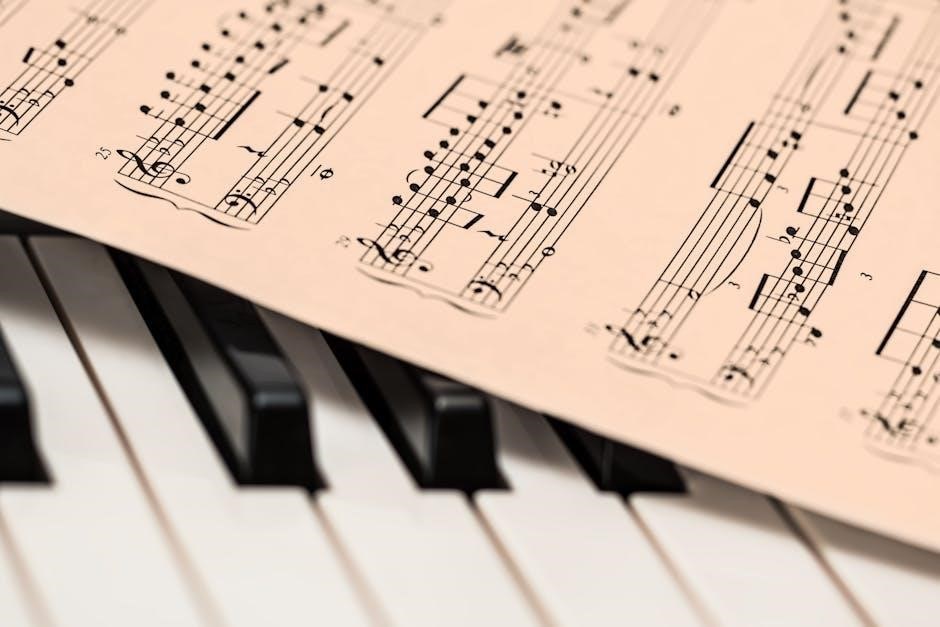
Be First to Comment